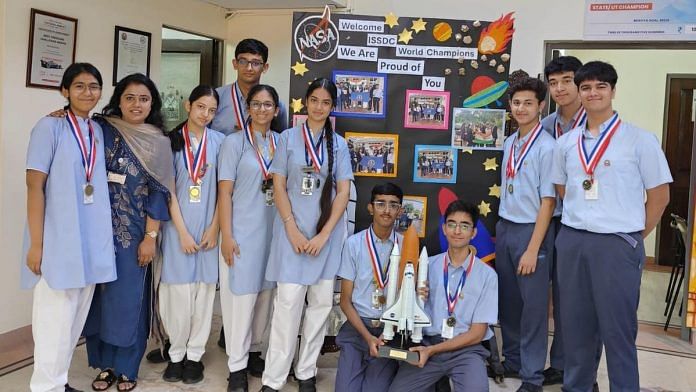New Delhi: By the year 2059, around 12,000 humans could be living on the moon’s Peary crater in an air-locked settlement called Balderol, complete with data centres, satellite-mounted solar panels, and robots. This ambitious project, which a Delhi and Kolkata school helped conceptualise and design, impressed judges from NASA, Boeing, and the National Space Society at the International Space Settlement Design Competition organised at NASA’s Kennedy Space Center.
The projected cost to create the fictitious Baderol settlement was just $36 billion, far more cost-effective than the $200-300 billion estimates of other projects submitted by students from around the world. By emulating the Indian Space Research Organisation’s ‘frugal innovation’ approach, the winning team, called ‘Vulture Aviation’, bagged the trophy in a gripping 41-hour-long competition in Florida on 29 July. The 20 Indian students from Amity International School, Delhi, and Lakshmipat Singhania Academy, Kolkata, made up a third of the winning team, with others from China, Australia, the UK, and the US.
The project showcased a blend of innovation and knowledge of space technology, but for India, it also represented how deep the fascination with space runs in the country’s youth.
“We like to call it the National Space Society’s cinematic universe—like Marvel,” laughed Taarush Goswami, one of the winners from Amity International School, Pushp Vihar, pulling up the design on his phone.
It is an experience not just in space technology but also in how the industry works. We have Red Team meetings before our final presentations to poke holes in our design and keep us on our toes. The judges too grill us endlessly
-Avneet Kaur Virdi, member of the winning Amity team
–
Goswami’s interest and knowledge of ‘outer space’ has been galvanised by India’s recent achievements, including the Chandrayaan-3 lunar mission last August and, later, Aditya-L1’s journey to study the sun. ISRO’s successful forays into space have caught the attention and imagination of students across cities and villages. From Hasudi Ausanpur village in Uttar Pradesh to Dharmapuri in Tamil Nadu, students are building telescopes, launching satellites into space, and winning international competitions.
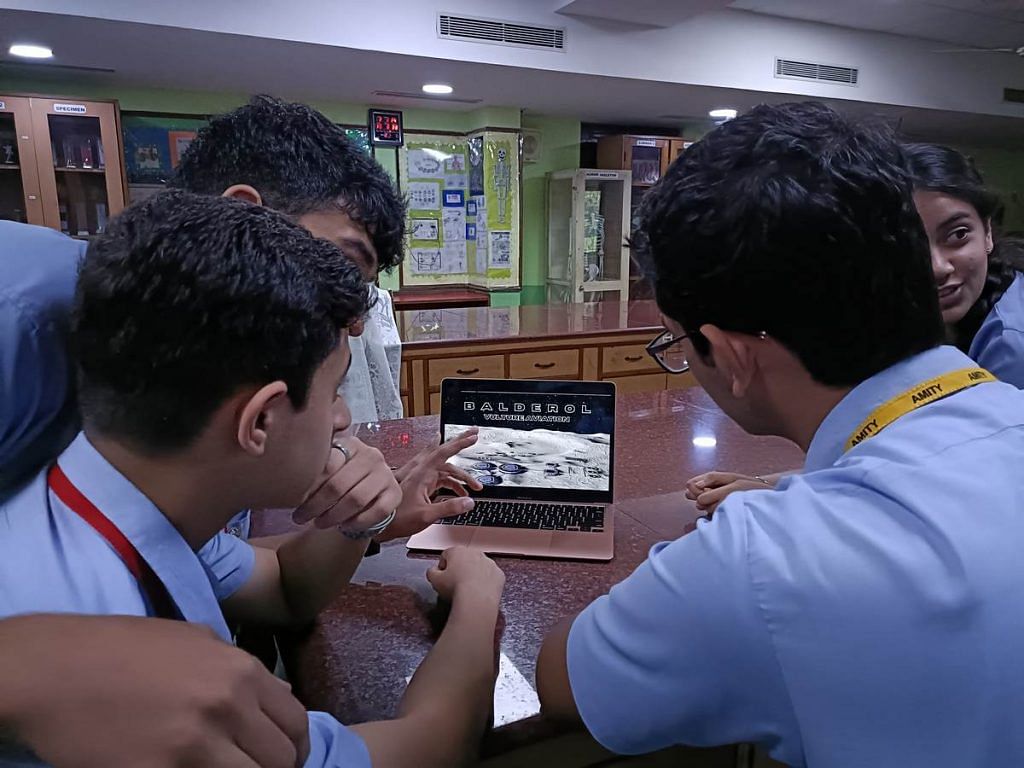
“Every child looks up to the sky in awe, but for the longest time in India it was just seen as a niche, difficult industry,” said Srimathy Kesan, founder of Space Kidz India, which works with teenage girls from rural government schools and juvenile homes to build satellites. Space, the final frontier, has become accessible, aspirational, and affordable.
ISRO too has recognised the importance of space education and awareness among students, supporting initiatives like Yuvika, a residential programme for young STEM enthusiasts. And now, the Indian National Space Promotion and Authorisation Centre (IN-SPACe), along with the All-India Council for Technical Education (AICTE), has released a model curriculum for a degree in space technology for Indian universities and colleges. The programme will help streamline Indian space tech education and interest.
“With the Indian space sector’s consistent achievements, it is one of the hottest industries, and the kids are joining in,” Kesan added.
The competitions required students from diverse backgrounds to collaborate on the design. The Amity School participants, all from the 11th and 12th grades, represented all three streams: science, commerce, and humanities
Also Read: Ahmedabad moon lab is waiting for Chandrayaan-4 samples. It has already studied Apollo rocks
The Balderol design
Balderol is the second human settlement on the moon in the International Space Settlement Design Competition (ISSDC) universe. Since the competition began in 1984, finalists have been tasked with building on projects from previous years.
The first lunar settlement, Alaskol, was created by finalists in the 2004 edition of the competition. Over the years, students have been challenged to create fictional settlements on the moon, on the Earth’s solar orbits, and even on asteroids for mining.
“It is an experience not just in space technology but also in how the industry works. We have Red Team meetings before our final presentations to poke holes in our design and keep us on our toes. The judges too grill us endlessly,” said Avneet Kaur Virdi, another winner from Amity.
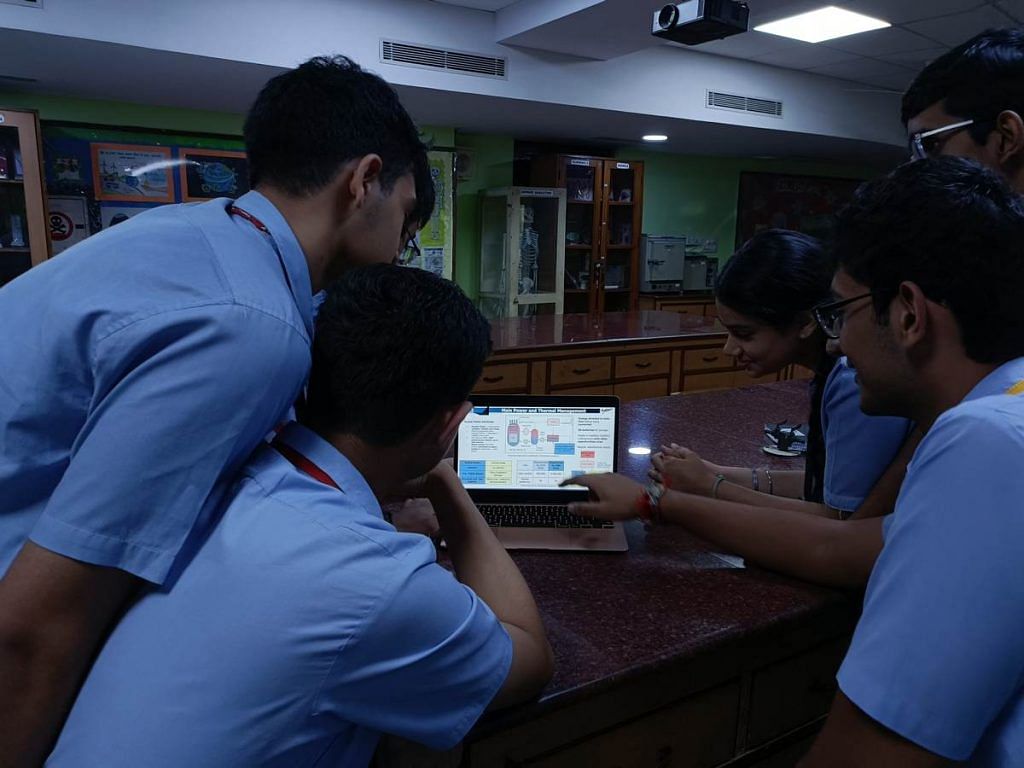
The competition itself is as fast-paced as a Marvel film. Students are divided into teams, known as ‘companies’, with names like Vulture Aviation and Grumbo Aerospace. Each ‘company’ has CEOs, managers, and departments.
At the start of the ‘live round’, each company receives a ‘request for proposal’ (RFP) from the judges. This simulates a real-world scenario where tenders are floated for construction companies, and the best proposal wins. Except, these proposals are for space construction, and candidates have just 41 hours to deliver a full-fledged plan, right down to the dimensions of the pipes in the residential air conditioners.
Even with their experiences in previous rounds, the final round unsettled the students when they first received the proposal.
“Everything threw us off!” exclaimed Samaya Chauhan, a 17-year-old winner from Amity. “Recreation was suddenly handed over to the automation department, design of machines was given to the operations department—we were all like, what is happening?”
Children were led to believe that working in space just means being an astronaut or an engineer building rockets. They didn’t realise you can be an architect, a designer, a historian, a communicator and still work in the space sector—they didn’t realise it because their parents didn’t realise it
-Srimathy Kesan, founder of Space Kidz India
One of the major challenges was that Balderol was supposed to host commercial ventures in the form of data centres. The students had previously designed only residential and mining settlements. This commercial aspect meant the team needed to conceptualise spaces to fit 25 million standard rack units worth of equipment on the moon for these data centres.
For any data centre, be it on Earth or the moon, there are two main requirements, energy and cooling. They came up with an ingenious solution—to use the permanent shadow of the moon to their advantage.
“Deep craters of the moon receive very little sunlight, and the Peary crater is one of them. Significant parts of it are in a permanent shadow, and obviously the temperatures there are much lower,” explained Dhruv Bhandari from Amity. “So, we decided to put our data centres there to save on energy for cooling the equipment.”
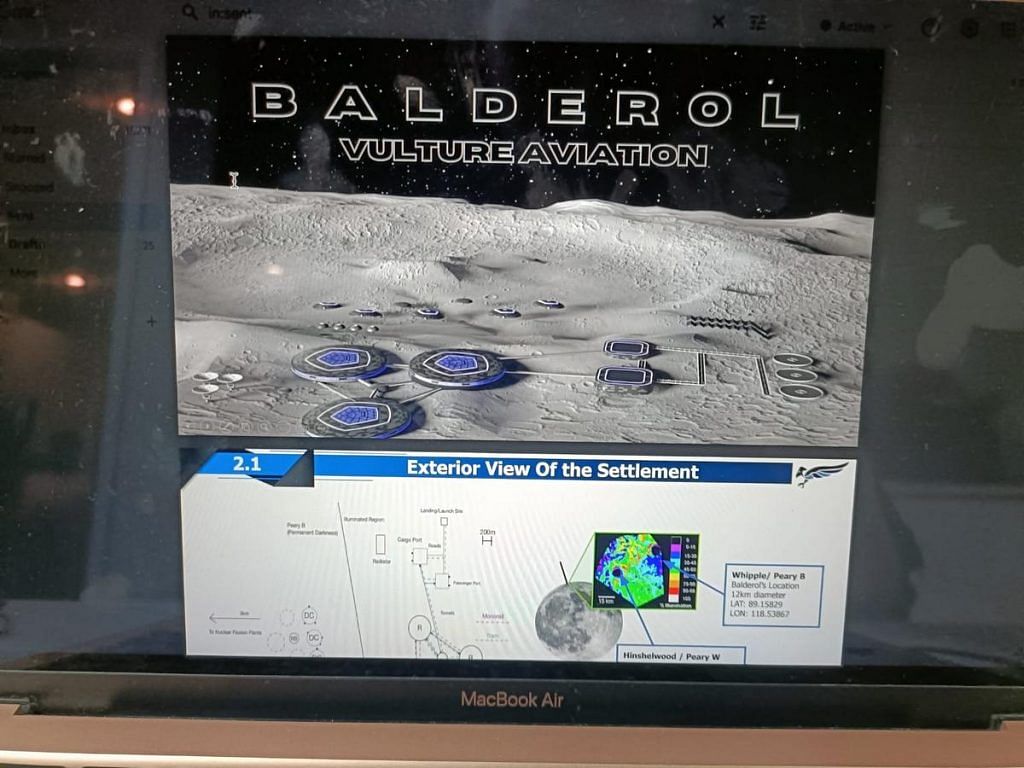
For energy, the students chose a blend of solar and nuclear fission. But instead of opting for conventional solar panels on the ground, they took it a step further by deploying solar panels on satellites for maximum solar exposure.
While the students spent their mornings and afternoons at the Kennedy Space Centre in their ‘company headquarters’, at night they worked in their hotel rooms. Vulture Aviation—which had students from the US, India, China, the UK, and Australia—had a floor all to themselves in the hotel, and discussions would often run late into the night.
Their design was so detailed that it included the number of toilet paper rolls required by residents weekly. The students received praise for their thoroughness, but the judges were not exactly lenient. Even though they won the trophy, their proposal was humorously dubbed “the least suckiest of all,” said Arsh Arora with a laugh.
When the International Space Settlement Design Competition (ISSDC) began 40 years ago, it had just 75 participants at Ohio State University. The first edition in India was held in 2004, organised by Abhishek Agrawal, the founder of the Asian regional chapter of the competition. Today, ISSDC spans five continents and involves thousands of participants.
The students from Delhi’s Amity International School and Kolkata’s Lakshmipat Singhania Academy cleared inter-school, regional, national, and Asian rounds to represent India in one of the world’s oldest space settlement design competitions.
“Our students have been trying for this competition for almost four years now,” said Kiranjot Kaur, science coordinator and physics teacher of Amity. “They had reached the international level once before during COVID, but this time we were so glad to see them become the first global ISSDC winners in our school’s history!”
Interdisciplinary project, communication gaps
The confusing proposal challenge and the tight deadline weren’t the only difficulties. Clear and quick communication was a hurdle, with teammates from India, China, the US, the UK, and Australia. Many of them had met merely hours before the competition began.
“I’d say we spent most of our time communicating—or rather, miscommunicating,” said Arsh, who also won the Dick Edwards Leadership Award in the competition. The award is given to one student across teams who displays exemplary leadership skills. Arsh earned the honour for his patience in coordinating across countries and departments for their settlement.
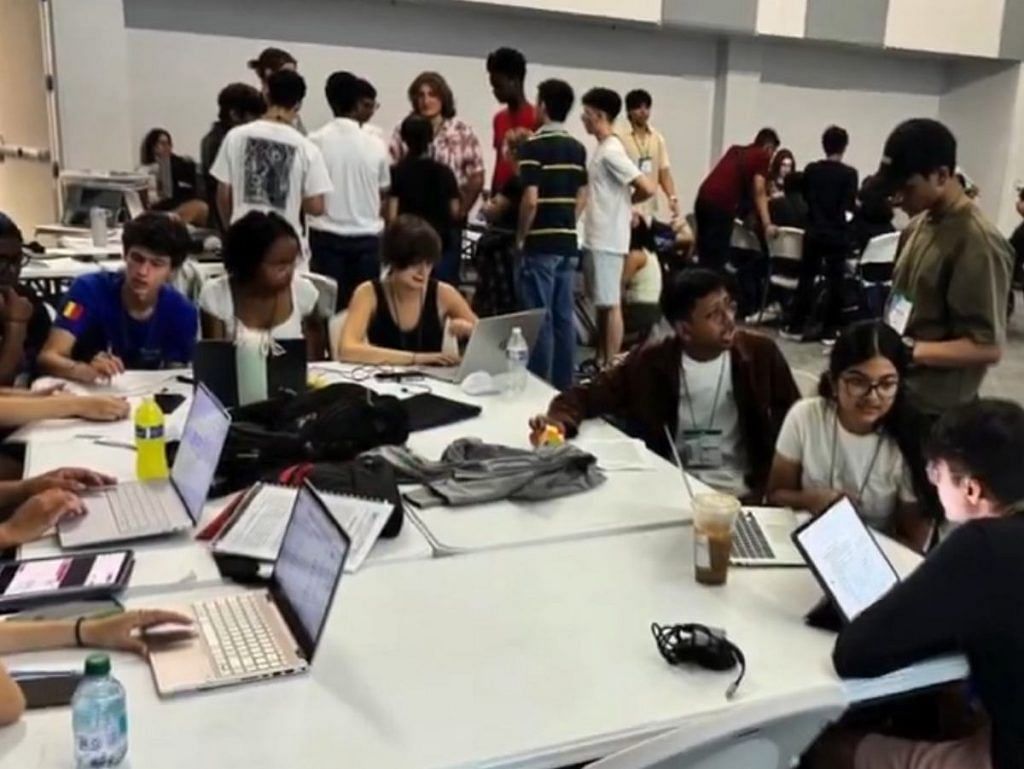
“I kept thinking of something my teacher Kiranjot ma’am said—to treat everyone’s ideas with the same respect I want mine to be treated with. Every other team has cleared their own national rounds to be here too, and they deserve to be here as much as we do,” said Arsh.
The competition envisioned departments—structural design, operations management, human factors, automation design, and business development—coming together to create the settlement. It required students from diverse backgrounds to collaborate on the design. The Amity School participants, all from the 11th and 12th grades, represented all three streams: science, commerce, and humanities.
“Gone are the days when this sector was just ‘rocket science,’” said Srimathy Kesan, who’d been a commerce student herself. “Humanities and creativity are paramount in space technology; scientists and engineers build on this creativity.”
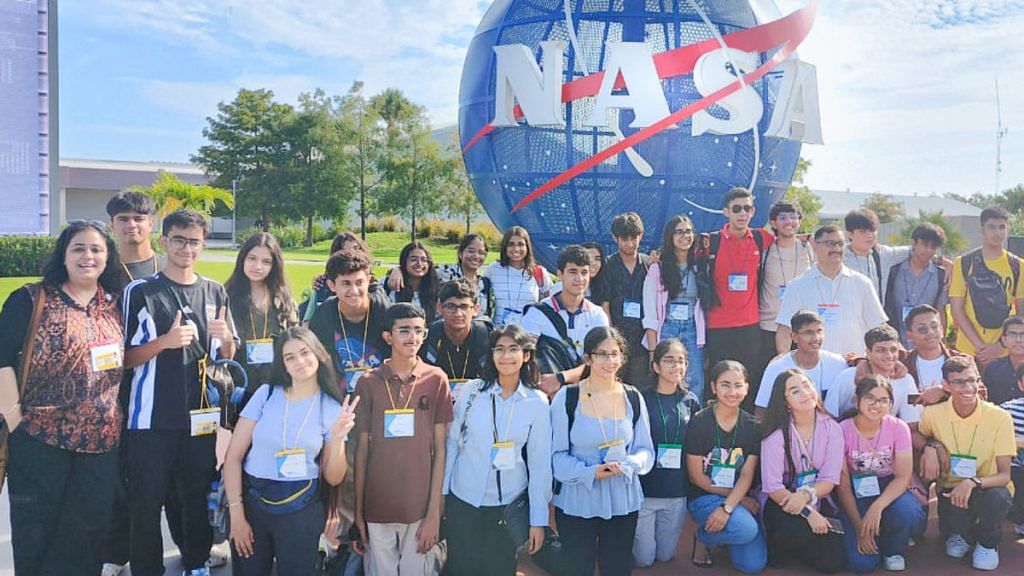
While the students eventually found a balance in their roles, initial confusion and apprehensions were inevitable. Bhandari, who came up with the idea of using the permanent shadow regions of the crater to store data centres, recounted how difficult it was to convince his teammates.
“I think I spent around five hours just talking to the other schools and telling them this idea would work. And this was before we even started writing the proposal,” he said, shaking his head.
In the end, what united them was their shared goal and passion.
“I mean, to love something so much that we go without sleep for 41 hours to make sure it is perfect—we did go through a lot together,” said Namya Jain, who was part of the operations department.
It’s only now, with the National Education Policy, that there’s room for students to learn about the space sector in an organised way, but infrastructural issues still exist.
Also Read: Indian students excel at International Earth Sciences Olympiad
India’s space race
Amity Pushp Vihar’s win is one among many of India’s laurels in an increasingly upward trajectory in student space research. Srimathy Kesan’s organisation, Space Kidz India, was the first in the country to bring rural Indian children together to build a satellite, which was then launched by NASA.
“I have interacted with over a million students in my career, and I know how children were led to believe that working in space just means being an astronaut or an engineer building rockets,” Kesan said. “They didn’t realise you can be an architect, a designer, a historian, a communicator and still work in the space sector—they didn’t realise it because their parents didn’t realise it.”
Now, however, the Indian education and space sectors are stepping up to the challenge of providing quality space education to school students.
In the Asteroid Search Campaign, organized by Space Technology and Education Pvt Ltd since 2010 in collaboration with NASA, Indian students have consistently excelled in discovering new asteroids.
Outer space is the best lab—everything from physics to chemistry to geography that kids learn in their classes can be actually applied in space
-Dr Sachin Bahmba, founder of Space Technology and Education
“Can you imagine, Indian kids alone have discovered over 2,000 asteroids? That is more than the combined discoveries of students from all other countries,” said Dr Sachin Bahmba, founder of Space Technology and Education. He set up his company after noticing a gap between students’ interest in astronomy and teachers’ lack of training in the subject when he was in school.
Space Technology and Education is a registered space tutor, meaning its space science curriculum and teaching modules are authorised by ISRO. It partners with schools across India to offer various space education programmes, including establishing astronomy clubs, organising space explorer workshops, and bringing mobile planetariums to schools.
“Outer space is the best lab—everything from physics to chemistry to geography that kids learn in their classes can be actually applied in space,” he added.
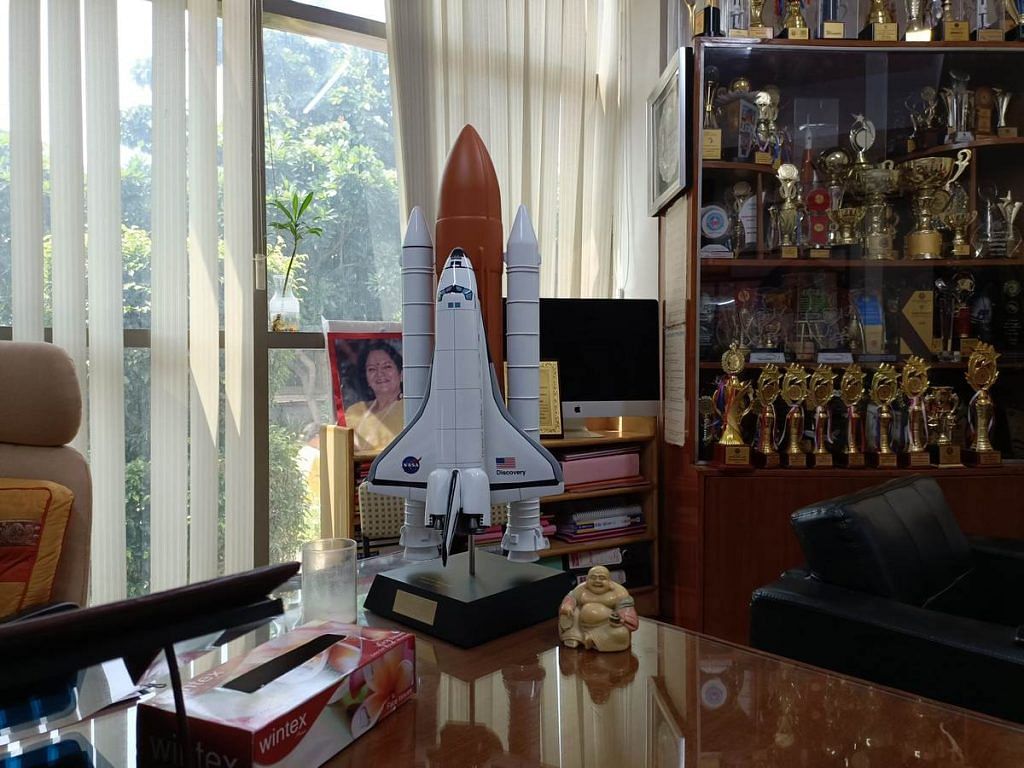
ISRO has played a big part in boosting space education, according to Kesan. While the space organisation has been around for a long time, its work has gained widespread attention only in recent years. This never deterred them though, she said, as ISRO persevered whether one person was watching them or a million. By the time of Chandrayaan-2, public excitement was palpable. And Chandrayaan-3 was described by Kesan as “like a cricket match.”
“The day Chadrayaan-3 was launched, I remember getting so many calls and emails from kids just saying ‘I want to be a scientist’, ‘I want to go on the moon’, ‘I want to build a satellite,’” said Kesan with a laugh. According to her, the combined power of the space industry, the media, and the students themselves brought India to that moment.
But some frontiers still need to be crossed.
“Our schools for the longest time did not have space education in their curriculum,” Kesan pointed out. It’s only now, with the National Education Policy, that there’s room for students to learn about the space sector in an organised way, but infrastructural issues still exist.
“The students who won the settlement design competition—my congratulations to them. India has a plan to put a human on the Moon by 2040, and I’m sure they’ll be the driving force behind that mission,” said Bahmba. “The future belongs to children, after all.”



